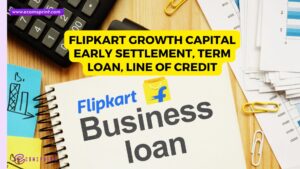In the ever-evolving landscape of commerce, the emergence of e-commerce has revolutionized the way businesses operate and consumers shop. E-commerce, short for electronic commerce, refers to the buying and selling of goods and services over the internet. This transformative shift has transcended geographical boundaries, allowing businesses to reach customers globally and providing consumers with unprecedented convenience and choice.
From the early days of online marketplaces to the current era of mobile commerce and virtual reality shopping experiences, the journey of e-commerce has been marked by innovation, adaptation, and exponential growth. Today, e-commerce encompasses a vast ecosystem of technologies, strategies, and business models, shaping the way we shop, interact, and transact in the digital age.
As we delve into the realm of e-commerce, we uncover a rich tapestry of concepts, terms, and practices that define this dynamic industry. From online stores and payment gateways to search engine optimization (SEO) and supply chain management, each facet plays a crucial role in shaping the e-commerce landscape.
Here are 50 terms commonly used in the field of e-commerce:
- E-commerce: The buying and selling of goods and services over the internet.
- Online Store: A website where products or services are sold to customers.
- Shopping Cart: Software that allows users to select and purchase items from an online store.
- Payment Gateway: A service that facilitates online payments by transferring payment information securely between the customer and the merchant.
- SSL Certificate: Secure Sockets Layer certificate that encrypts data transmitted between a website and a user’s browser.
- Inventory Management: The process of overseeing and controlling the flow of goods in and out of an e-commerce business.
- Dropshipping: A retail fulfillment method where a store doesn’t keep the products it sells in stock, but instead purchases them from a third party and ships directly to the customer.
- Fulfillment Center: A warehouse where products are stored, picked, packed, and shipped to customers.
- Digital Marketing: Promoting products or services using digital channels such as search engines, social media, email, and websites.
- SEO (Search Engine Optimization): The practice of optimizing a website to rank higher in search engine results pages (SERPs).
- SEM (Search Engine Marketing): A form of internet marketing that involves promoting websites by increasing their visibility in search engine results pages through paid advertising.
- PPC (Pay Per Click): An internet advertising model where advertisers pay a fee each time their ad is clicked.
- Conversion Rate: The percentage of website visitors who complete a desired action, such as making a purchase.
- Abandoned Cart: When a customer adds items to their shopping cart but leaves the website without completing the purchase.
- Customer Acquisition Cost (CAC): The cost associated with acquiring a new customer.
- Customer Lifetime Value (CLV): The total revenue a customer is expected to generate over the lifetime of their relationship with a business.
- Churn Rate: The rate at which customers stop doing business with a company over a specific period.
- Responsive Design: A website design approach that ensures optimal viewing across various devices and screen sizes.
- Mobile Commerce (M-commerce): The buying and selling of goods and services through mobile devices.
- Cross-selling: The practice of encouraging customers to purchase related or complementary products.
- Upselling: The technique of persuading customers to buy a higher-end product or upgrade to a more expensive version of what they’re considering.
- Customer Retention: The ability of a business to retain its customers over a certain period.
- A/B Testing: Experimenting with two different versions of a web page or marketing campaign to determine which one performs better.
- User Experience (UX): The overall experience of a user when interacting with a website or application.
- User Interface (UI): The graphical layout of an application or website, including buttons, menus, and other elements.
- Responsive Customer Support: Providing timely and helpful assistance to customers through various channels such as email, chat, and phone.
- Referral Program: A marketing strategy that encourages customers to refer others to a business in exchange for rewards or incentives.
- Virtual Reality (VR) Shopping: A shopping experience that uses virtual reality technology to simulate the look and feel of a physical store.
- Augmented Reality (AR) Shopping: A shopping experience that overlays digital information or images onto the real-world environment through a device such as a smartphone or tablet.
- Subscription Commerce: A business model where customers subscribe to receive products or services on a recurring basis.
- Content Marketing: Creating and distributing valuable, relevant content to attract and engage a target audience.
- Product Reviews and Ratings: Feedback provided by customers about the products they’ve purchased, which can influence other customers’ purchasing decisions.
- E-commerce Platform: Software that enables businesses to build and manage their online stores, including website design, inventory management, and payment processing.
- Marketplace: An online platform where multiple sellers can list and sell their products to a wide audience of potential buyers.
- Digital Wallet: An electronic device or online service that allows individuals to make electronic transactions, such as purchasing goods online.
- GDPR (General Data Protection Regulation): A regulation in EU law on data protection and privacy for all individuals within the European Union and the European Economic Area.
- PCI DSS (Payment Card Industry Data Security Standard): A set of security standards designed to ensure that all companies that accept, process, store, or transmit credit card information maintain a secure environment.
- Fraud Prevention: Measures taken by e-commerce businesses to detect and prevent fraudulent activities, such as credit card fraud and identity theft.
- Supply Chain Management: The management of the flow of goods and services, including the movement and storage of raw materials, work-in-process inventory, and finished goods from point of origin to point of consumption.
- Market Analysis: The process of evaluating the attractiveness and dynamics of a market within a specific industry.
- Customer Segmentation: Dividing customers into groups based on characteristics such as demographics, behavior, and purchasing habits.
- Landing Page: A standalone web page created specifically for a marketing or advertising campaign, with the goal of converting visitors into leads or customers.
- Exit Intent Popup: A popup displayed to website visitors when they show intent to leave the site, typically offering a discount or incentive to encourage them to stay.
- Affiliate Marketing: A performance-based marketing strategy where businesses reward affiliates for driving traffic or sales to their website through the affiliate’s marketing efforts.
- Dynamic Pricing: A pricing strategy where prices are adjusted in real-time based on factors such as demand, competition, and customer behavior.
- Blockchain Technology: A decentralized, distributed ledger technology used to record transactions across multiple computers in a secure and transparent manner.
- Chatbot: A computer program designed to simulate conversation with human users, typically used for customer service and support purposes.
- Micro-Moment: An intent-rich moment when a person turns to a device to act on a need – to know, go, do, or buy.
- Social Proof: The influence that the actions and attitudes of others have on our own behavior, often manifested in the form of reviews, testimonials, and social media endorsements.
- Omnichannel Retailing: A retail strategy that integrates multiple sales channels, such as brick-and-mortar stores, online stores, mobile apps, and social media, to provide customers with a seamless shopping experience across all touchpoints.
These terms cover various aspects of e-commerce, from marketing and sales to technology and customer experience, providing a comprehensive overview of the industry’s vocabulary.




